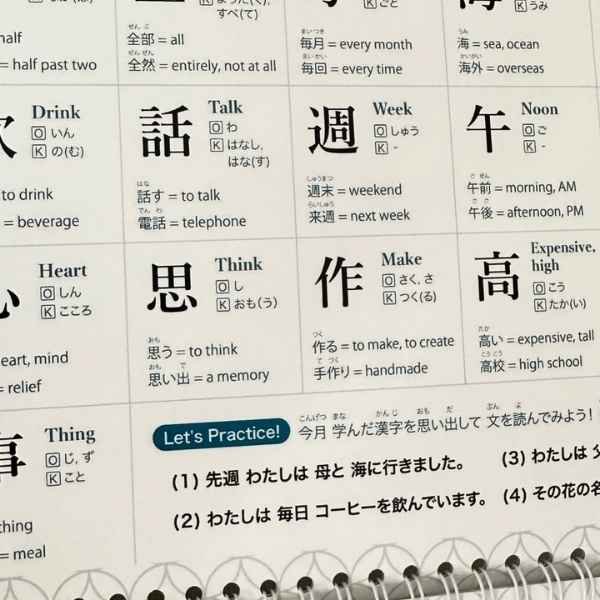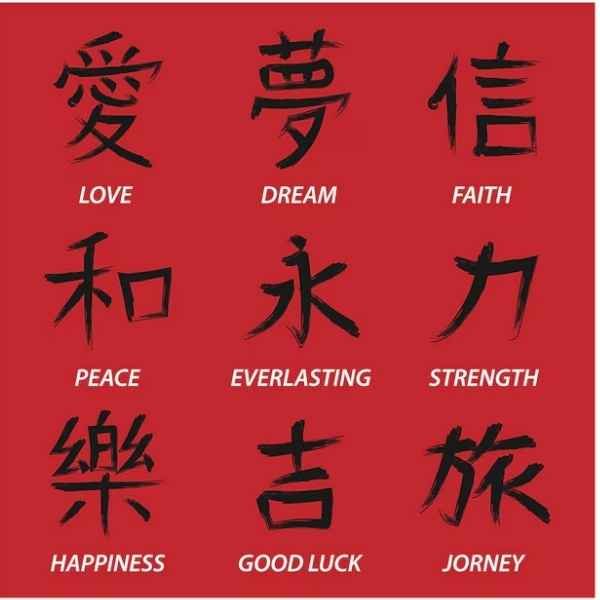
Learn Japanese Kanji Online: A Step-by-Step Guide
Kanji is one of the most challenging yet essential aspects of learning Japanese. With over 2,000 commonly used characters, it may seem overwhelming at first. But don’t worry! With the right methods and resources, you can learn kanji efficiently and make steady progress.
In this guide, you’ll discover:
Kanji Basics → Why learning kanji is crucial for fluency
Kanji Radicals → The building blocks of kanji characters
Stroke Order Rules → How to write kanji correctly from the start
Kanji Meanings & Readings → Understanding the logic behind kanji
Mnemonics & Memorization Hacks → Smart techniques to learn kanji faster
Best Online Resources → Free tools to help you master kanji
Ready to take your Japanese skills to the next level? Let’s get started!
Want to expand your Japanese vocabulary? Our Learn Japanese Vocabulary Online guide provides key words, study techniques, and online tools to help you build your vocabulary effectively.
Learn Japanese Kanji Online – Step-by-Step Guide for Beginners
Learning Japanese is a rewarding journey, and mastering Kanji, the logographic characters used in the Japanese writing system, is a critical step. While Hiragana and Katakana cover basic phonetics, Kanji conveys meaning and allows for reading complex texts. With the rise of online learning, beginners can now tackle Kanji effectively using structured resources, apps, and study strategies. This guide breaks down the best ways to learn Japanese Kanji online.
Understanding Kanji: Basics & Importance
Kanji are characters borrowed from Chinese writing and adapted to Japanese. Each Kanji represents a concept, object, or action, and most have multiple readings depending on context. There are over 2,000 essential Kanji characters used in daily life and over 3,000 in total for advanced literacy. Beginners often start with the JLPT N5 and N4 Kanji, which cover basic everyday words.
Key components of Kanji:
- Radicals: Building blocks of Kanji that help with memorization.
- Stroke Order: Following proper stroke order is crucial for correct writing.
- On’yomi & Kun’yomi: On’yomi is the Chinese reading, while Kun’yomi is the Japanese reading.

What is Kanji?
Kanji are Chinese characters used in the Japanese writing system. Unlike hiragana and katakana, kanji carry meaning and are used in most Japanese texts.
Why is Kanji Important?
Improves Reading Comprehension – Most Japanese books, websites, and signs contain kanji.
Reduces Ambiguity – Kanji helps differentiate words that sound the same in hiragana.
Essential for Writing – Formal and academic writing requires kanji.
Boosts Vocabulary – Many words share common kanji components, making new words easier to learn.
Fact: You need to know around 2,136 Jōyō kanji (常用漢字) to read Japanese newspapers!
Learn Kanji Radicals First
Radicals are the building blocks of kanji. Learning radicals first makes it easier to break down and memorize complex kanji.
Common Kanji Radicals & Their Meanings
| Radical | Kanji Example | Meaning |
| 人 (hito) | 休 (rest) | Person |
| 水 (mizu) | 海 (sea) | Water |
| 火 (hi) | 灯 (lamp) | Fire |
| 木 (ki) | 森 (forest) | Tree |
| 日 (hi/nichi) | 明 (bright) | Sun / Day |
Tip: WaniKani and Jisho.org provide radical breakdowns for every kanji!
Want to master Japanese fast without spending money? Our Learn Japanese Quickly Online for Free guide introduces the best free tools, study techniques, and online resources to help you improve efficiently.
Master Kanji Stroke Order
Master Kanji Stroke Order is essential for anyone learning Japanese writing. Proper stroke order ensures that Kanji are written correctly, neatly, and efficiently, which is especially important for readability and memorization. Each Kanji character has a specific sequence of strokes, following traditional rules such as top-to-bottom, left-to-right, and horizontal-before-vertical. Learning the correct stroke order not only helps in writing legibly but also aids in memorizing the character’s structure and meaning.
Why Stroke Order Matters
Improves Writing Accuracy – Writing kanji correctly makes them easier to recognize.
Helps with Memorization – Following consistent stroke patterns reinforces memory.
Basic Kanji Stroke Order Rules
1.Top to Bottom (三 → "san" for three)
2.Left to Right (川 → "kawa" for river)
3.Horizontal before Vertical (十 → "juu" for ten)
4.Outer Components First (回 → "kai" for rotate)
5.Small Dots & Strokes Last (心 → "kokoro" for heart)
Best Tools for Stroke Order Practice
Kanji Study (App) – Interactive stroke order lessons
Skritter – Digital kanji writing practice
Jisho.org – Shows kanji stroke animations
Tip: Use a Japanese calligraphy workbook or a whiteboard for extra practice!
Learn Kanji Meanings & Readings
Each kanji has multiple readings depending on context:
- On’yomi (音読み) – Chinese-based pronunciation (used in compound words)
- Kun’yomi (訓読み) – Japanese-based pronunciation (used for standalone words)
To deepen your understanding of foreign-influenced vocabulary, explore this insightful guide on Gairaigo – Understanding Japanese Loanwords and how they’re used in modern conversation.
Example: 日 (Sun, Day)
| Reading Type | Pronunciation | Example |
| On’yomi (Chinese) | ニチ (nichi), ジツ (jitsu) | 日本 (Nihon - Japan) |
| Kun’yomi (Japanese) | ひ (hi), び (bi), か (ka) | 日曜日 (Nichiyoubi - Sunday) |
Learning Hack: Use context-based reading with Satori Reader or NHK Web Easy to reinforce kanji comprehension!
Use Kanji Mnemonics for Faster Memorization
Mnemonics help associate kanji with images or stories, making them easier to remember.
Example Mnemonics
火 (Fire) → Looks like a flickering flame
森 (Forest) → Three trees together represent a dense forest
見 (See) → Looks like an eye with legs walking
Best Mnemonic-Based Resources
WaniKani – Uses fun stories to remember kanji
Remembering the Kanji (Book) – Logical kanji memory techniques
Tip: Make your own mnemonics by associating kanji with real-life objects or funny stories!
Looking for the best apps to improve your Japanese skills? Our Online Japanese Learning Apps guide covers top-rated apps for vocabulary, grammar, Kanji, listening, and speaking practice.

Best Resources to Learn Kanji Online
Here are the top free resources for learning kanji effectively:
WaniKani (Free Levels) – Mnemonic-based kanji learning
Kanji Study (App) – Stroke order and kanji writing
Jisho.org – Kanji dictionary with stroke animations
Anki (Kanji Decks) – Spaced repetition flashcards
JapanesePod101 (Free Lessons) – Kanji-related audio lessons
Tip: Combine flashcards, writing practice, and reading exercises for best results!
FAQs on Learning Japanese Kanji Online
1. What’s the best way to start learning kanji?
Begin with radicals, then learn simple kanji before moving to complex ones. Use mnemonics for better retention.
2. How many kanji should I learn first?
Start with 100 basic kanji (JLPT N5 level) and gradually move to 2,136 Jōyō kanji.
3. Do I need to learn stroke order?
Yes! Stroke order improves writing accuracy and memory. Use Kanji Study or Skritter for practice.
4. What’s the fastest way to memorize kanji?
Use mnemonics, spaced repetition (Anki), and reading practice to reinforce learning.
5. Can I learn kanji without learning hiragana and katakana?
No! You must learn hiragana and katakana first because they are used alongside kanji in Japanese writing.
Planning to study in Japan? Our Cost of Studying in Japan guide provides a breakdown of tuition fees, living expenses, and scholarship opportunities to help you plan your budget effectively.
Learning kanji may seem difficult, but by focusing on radicals, stroke order, mnemonics, and daily practice, you can master Japanese kanji efficiently.
Action Plan:
Step 1: Start with radicals and simple kanji
Step 2: Use mnemonics & stroke order practice
Step 3: Reinforce with flashcards and reading exercises